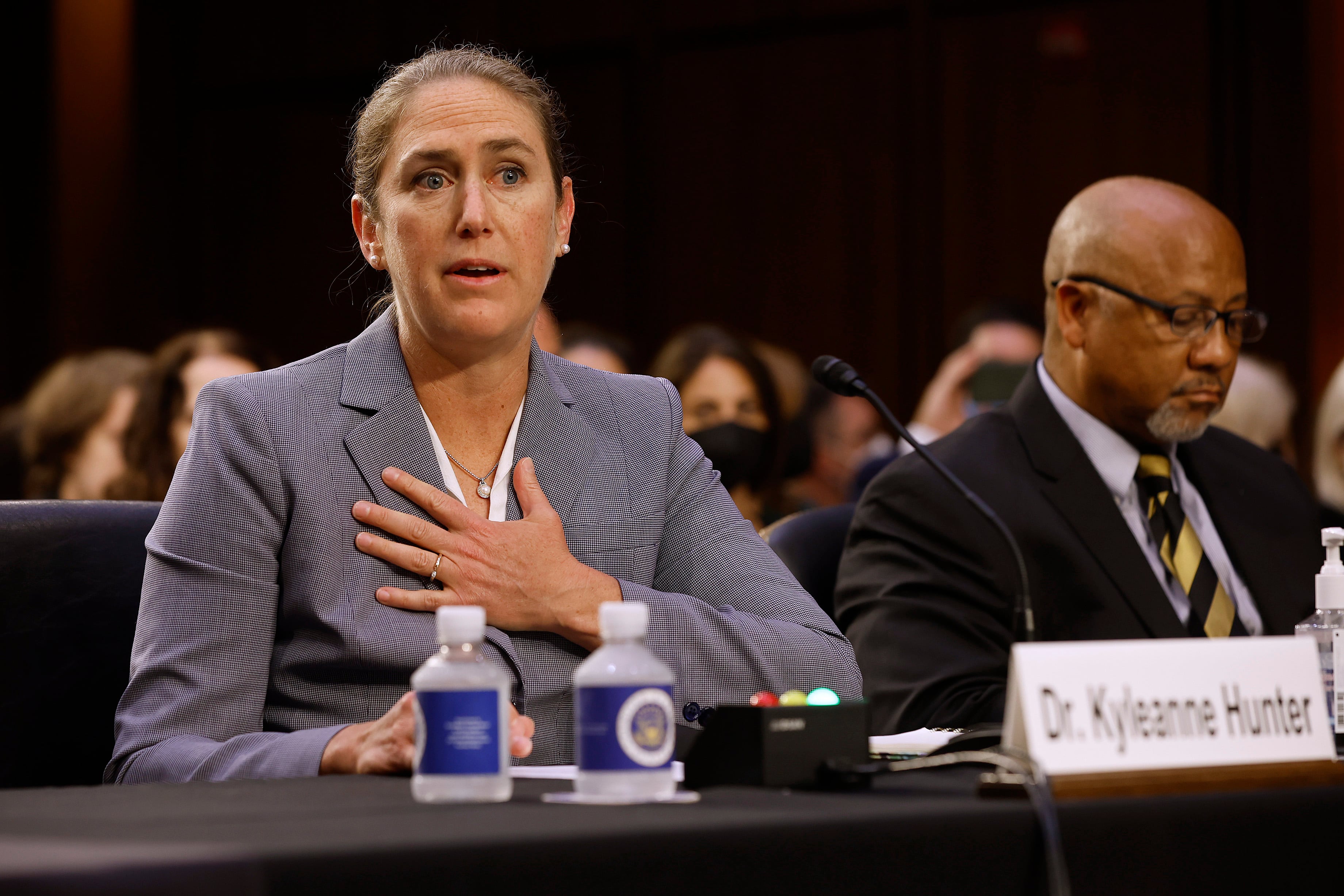WASHINGTON ― U.S. President Joe Biden’s plans to cancel the Sea-Launched Cruise Missile-Nuclear development program have emerged as an early dispute in a brewing fight over next year’s defense budget.
The administration’s proposed fiscal 2023 defense budget, unveiled this week, would zero out the program, in coordination with a forthcoming Nuclear Posture Review. That’s a win for progressive Democrats and non-proliferation advocates who have decried the nascent submarine-launched missile, among other nuclear weapons initiated by the Trump administration, as wasteful and escalatory.
But Republicans last year warned the Navy not to kill the SLCM-N. At a hearing Wednesday, the top Republican on the House Strategic Forces Subcommittee, Rep. Doug Lamborn, revived the pushback when he elicited support for developing the SLCM-N (and retaining the B83 gravity bomb) from the commander of U.S. and NATO forces in Europe, Gen. Tod Wolters.
When Lamborn, of Colorado, asked if Wolters agreed with U.S. Strategic Command’s chief, Adm. Chas Richard, who supports the SLCM-N, Wolters said: “I do, congressman, and I know his words were attempting to drive home the fact that having multiple options exacerbates the challenge for the potential enemies against us.”
Lamborn argues cutting the weapon would set back the country’s nuclear deterrence efforts.
“Attempting to cut any nuclear capabilities demonstrates that this administration is either unwilling or unable to confront the reality of the threats we face. The United States needs a strong nuclear deterrence posture, underpinned by safe, secure, and effective nuclear capabilities, in order to keep our country, allies, and partners safe,” he said in a statement to Defense News.
The annual defense budget cycle is usually marked by partisan fighting over the cost and composition of the nuclear arsenal. Still, progressive Democrats may be dissatisfied this year that Biden’s $813.4 billion national defense budget includes $50.9 billon in nuclear weapons spending, up $7.7 billion from the 2022 request.
While complete budget numbers and the Nuclear Posture Review haven’t yet been released, Geoff Wilson, the political director for the Council for a Livable World, a non-proliferation group, forecasted major increases in nuclear weapons development programs. He cited the Long Range Stand Off Weapon, a nuclear-armed air-launched cruise missile under development by Raytheon; the new B-21 bomber, under development by Northrop Grumman; and the Columbia-class submarine.
“This is likely part of the ‘modernization bow wave’ that analysts have been warning about as these systems get further along in their development cycle all at the same time,” Wilson said. “But a programmatic greenlight from the White House on many of these systems, in both this first ‘real’ Biden defense budget as well as the new NPR, could give progressives in Congress little room to maneuver in combating these costs this year.”
RELATED

The Biden budget’s defunding of the B83, 1.2 megaton gravity bomb ― which the Trump administration revived after it was slated for retirement ― is likely to renew another fight that roiled the armed services committees last year. Politico chronicled how the Senate approved Biden’s request for $52 million in life-extension funding for the weapon, and House Armed Services Committee Chairman Adam Smith, D-Wash., excised it from his chamber’s annual defense policy bill, all before hawkish House Republicans mounted a failed, party-line vote to add it back.
A different fight played out last year over the SLCM-N. After Biden included $15.2 million in his 2022 budget to begin research and development on the SLCM-N, Democrats pushed back, arguing the Obama administration found a similar weapon, the nuclear armed Tomahawk Land Attack Missile, redundant and retired it.
A year ago, Maryland Sen. Chris Van Hollen, a lead appropriator, and House Seapower Subcommittee Chairman Joe Courtney, of Connecticut, launched a bill to bar funding for the SLCM-N.
Courtney said then that installing nuclear warheads on Virginia-class attack submarines would sap resources from growing the Navy’s fleet and distract from the core mission of attack submarines in the Pacific and European theaters, where they are typically laden with ship-killing, conventional Tomahawk missiles.
Months later, after then-Acting Navy Secretary Thomas Harker issued a memo calling for the service to halt funding for the SLCM-N, Ohio Republican Rep. Mike Turner argued that Defense Secretary Lloyd Austin should rescind the memo, citing the growing nuclear arsenals of Russia and China.
Likeminded Republicans this year are planning to seek ammunition from two provisions included in last year’s defense policy bill. One requires the Pentagon share its internal correspondence with Congress regarding the proposed budget for the SLCM-N, while the other requires the Pentagon to submit its analysis of alternatives for the missile and provide Congress with a briefing on the analysis.
“The analysis of alternatives has been done for a year; they just haven’t given it to us,” said a senior congressional official not authorized to speak on the record. “We haven’t pressed them too hard because we’ve been waiting until the NPR. Now is when the pressing is going to really start.”
Joe Gould was the senior Pentagon reporter for Defense News, covering the intersection of national security policy, politics and the defense industry. He had previously served as Congress reporter.










